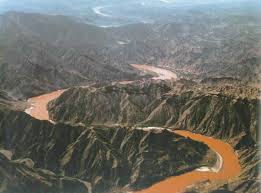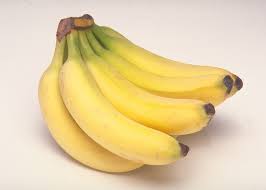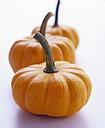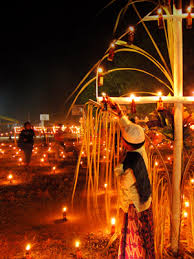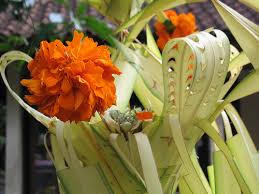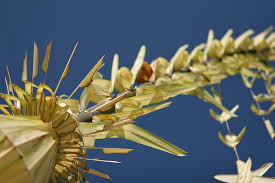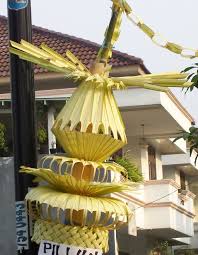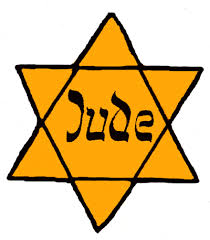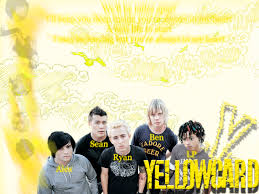Dengan panjang 5.464 km, sungai ini merupakan sungai terpanjang kedua di Tiongkok setelah Sungai Panjang.
PERADABAN LEMBAH SUNGAI KUNING
Sejarah tertua di Cina dimulai dari muara Sungai Kuning (Hwang-Ho, sekarang bernama Huang-He). Tetapi di Cina terdapat dua sungai besar, yaitu Sungai Hwang-Ho dan Yang Tse Kiang (Sekarang bernama Chang Jiang).
Letak Geografis
Sungai Kuning atau Hwang-Ho bersumber di daerah pegunungan Kwen-Lun di Tibet. Setelah melalui daerah pengunungan Cina Utara, sungai panjang yang membawa lumpur kuning itu membentuk dataran rendah Cina dan bermuara di Teluk Tsii-Li di Laut Kuning. Sedang di dataran tinggi sebelah selatan mengalir Sungai Yang Tse Kiang yang berhulu di Pegunungan Kwen-Lun (Tibet) dan bermuara di Laut Cina Timur.
Pertanian
Pada daerah yang subur itu masyarakat Cina hidup bercocok tanam seperti menanam gandum, padi, teh, jagung dan kedelai. Pertanian Cina kuno sudah dikenal sejak zaman Neolitikum, yakni sekitar tahun 5000 SM. Kemudian pada masa pemerintahan Dinasti Chin (221-206 SM) terjadi kemajuan yang mencolok dalam sistem pertanian. Pada masa ini pertanian sudah diusahakan secara intensif. Pupuk sudah dikenal untuk menyuburkan tanah. Kemudian penggarapan lahan dilakukan secara teratur agar kesuburan tanah dapat bertahan. Irigasi sudah tertata dengan baik. Pada masa ini lahan gandum sudah diusahakan secara luas.
Teknologi
Bumi Cina mengandung berbagai barang tambang seperti batu bara, besi, timah, wolfram, emas dan tembaga, yang sebagian besar terdapat di daerah Yunan. Pembuatan barang-barang seperti perhiasan, perabotan rumah tangga, alat-alat senjata seperti pisau, pedang, tombak, cangkul, sabit dan lain-lain, menunjukan tingginya tingkat perkembangan teknologi masyarakat Cina pada saat itu.
Aksara dan Bahasa
Masyarakat Cina sudah mengenal tulisan, yaitu tulisan gambar. Tulisan gambar itu merupakan sebuah lambang dari apa yang hendak ditunjukkan. Tulisan itu merupakan salah satu sarana komunikasi. Untuk memupuk rasa persatuan dan rasa persaudaraan, pada permulaan abad ke-20 dikembangkan pemakaian bahasa persatuan, yaitu bahasa Kuo-Yu.
Pemerintahan
Dalam perjalan sejarahnya, ada dua macam sistem pemerintahan yang pernah dianut dalam kehidupan kenegaraan Cina kuno, yaitu:
- Sistem Pemerintahan Feodal, dalam masa pemerintahan ini, kaisar tidak menangani langsung urusan kenegaraan. Kondisi ini berlatar belakang bahwa kedudukan kaisar bersifat sakral. Kaisar dihormati sebagai utusan atau bahkan anak dewa langit, sehingga tidak layak mengurusi politik praktis.
- Sistem Pemerintahan Unitaris, kaisar berkuasa mutlak dalam memerintah. Kekuasaan negara berpusat di tangan kaisar, sehingga kaisar campur tangan dalam segala urusan politik praktis.
Dinasti yang Berkuasa
- Dinasti pertama yang berkuasa di Cina adalah dinasti Syang (Hsia). Berdasarkan cerita rakyat Cina, pada zaman dinasti Syang telah berkembang sistim kepercayaan memuja para dewa. Dewa tertinggi yang bernama Dewa Shang-Ti. Dinasti Syang berakhir sekitar tahun 1766 SM dan digantikan oleh dinasti Yin (1700-1027 SM).
- Dinasti Chou adalah dinasti ketiga yang berkuasa di Cina. Pada zaman kekuasaan dinasti Chou ini muncul tokoh-tokoh filsafat yang memiliki peranan penting dalam perkembangan kehidupan rakyat Cina hingga kini, seperti Lao Tse dan Kong Fu Tse.
Dinasti ini didirikan oleh raja Cheng yang bergelar Shih Huang Ti.
Sungai Kuning merupakan sungai ibunda bagi bangsa China. Disebabkan iklim global semakin panas, pada beberapa tahun yang lalu, keadaan resapan air dan hakisan tanah semakin teruk di kawasan punca Sungai Kuning, kemerosotan padang rumput, kepupusan tumbuh-tumbuhan mengakibatkan resapan air dan hakisan tanah menjadi lebih serius, jumlah air dari punca Sungai Kuning semakin kurang dan sistem ekologi semakin teruk. Akan tetapi, ekologi punca Sungai Kuning mula dipulih baik.
Melalui usaha selama lebih tiga tahun, kadar litupan tumbuh-tumbuhan di kawasan punca Sungai Kuning telah meningkat, jumlah air di sungai dan tasik bertumbuh dan sistem ekologi akhirnya pulih.
Sejak tahun 1980-an, di hulu Sungai Kuning, air sungai itu menjadi kering selama beberapa bulan setiap tahun. Jumlah aliran air purata setiap tahun berkurang 22.7%. beberapa tasik di kawasan hulu Sungai Kuning telah menjadi kering.
Kaunti Maduo Provinsi Qinghai di barat laut China merupakan punca Sungai Kuning. Pada masa dahulu terdapat sebanyak lebih 4000 tasik di sana. Pada Julai tahun 2004, wartawan yang mengambil liputan di kaunti tersebut mendapati bahawa 90% tasik di sana telah menjadi kering, padang rumput yang luas di sana telah menjadi tanah tandus.
Baru-baru ini, wartawan sekali lagi pergi ke padang rumput di Kaunti Maduo dan mendapati lebih 30 ekor keldai liar Tibet dan antelop Tibet. Antaranya, 5 ekor keldai liar Tibet sedang makan rumput di tempat yang hanya sejauh 200 meter daripada rumah menggembala. Selain itu, burung liar sedang bersantai di tasik.
Pegawai yang bertanggung jawab atas urusan hidrologi kaunti Maduo Jawatankuasa Sumber Air Sungai Kuning Liang Haiqing memberitahu wartawan bahawa data pengukuran telah menunjukkan bahawa jumlah turun hujan di kawasan punca Sungai Kuning mula bertumbuh, paras air Sungai Kuning mula naik tinggi.
Pada masa ini, disebabkan jumalah air Sungai Kuning tidak cukup, stesen penjanaan elektrik Heyuan di Kaunti Maduo terpaksa menghentikan penjanaan elektrik sejak Januari tahun 2003. Seiring dengan pertambahan jumlah air Sungai Kuning, stesen tersebut beroperasi pula.
Wartawan dimaklumkan bahawa tasik yang kering di kawasan tersebut juga telah menakung air pula, tasik yang menakung air itu telah mencatat lebih 3800.
Naib Ketua Kaunti Maduo ZhaLuo berkata bahawa sejak tahun 2003, kerajaan kaunti itu mula melaksanakan dasar menghentikan penggembalaan supaya padang rumput dipulihkan, melindungi ekologi di kawasan punca tiga sungai, memindahkan penghuni, membenihkan awan untuk membuat hujan buatan dan lain-lain, dengan berbuat demikian, keadaan ekologi kaunti Maduo mula dipulih baik.
Wartawan dimaklumkan dari Jabatan Pengukuran China bahawa projek pengawasan penderiaan jauh terhadap keadaan ekologi di kawasan punca tiga sungai China telah beroperasi di bandar Xining Provinsi Qinghai baru-baru ini.
Pegawai berkenaan Jabatan Pengukuran China memaklumkan bahawa projek tersebut akan menjadi platform amaran awal dan pengawasan yang bersepadu selain pengawasan bencana alam dan pengawasan persekitaran.
Sumber alam adalah amat penting bagi kehidupan setiap orang. Perlindungan alam sekitar merupakan tanggungjawab setiap orang di seluruh dunia.
Sejarah peradaban & kebudayaan ras kuning?
Bagaimana keterkaitan budaya China,Korea,Jepang...yg sekarang begitu maju pesat perekonomian & menjadi negara terkemuka,dan bangsa bangsa tsb terutama Jepang & korea sangat dihargai Etos kerja,displin & budayanya bahkan oleh orang orang barat sekalipun?
- "konfusianisme"
- "konfusius"
Mengenai budaya oriental yang mirip satu sama lain, itu karena peradaban pertama di asia timur mulai muncul di sungai kuning sekitar 7000 tahun silam, dengan adanya desa-desa dan kota-kota kecil pertama. di situ, budaya oriental mulai dibentuk, terutama oleh kondisi lingkungan dan iklimnya.
Ketika daerah mulai sesak, banyak dari penduduknya yang merantau ke timur. mereka mengkolonisasi daerah semenanjung korea. di situ, mereka mendirikan negara2 kecil yang pada akhirnya dipersatukan oleh raja Dagun Wangom, menjadi bangsa korea.
Lebih lama lagi, ada beberapa peperangan baik di korea maupun di daratan china, sehingga banyak pengungsi merantau ke timur melewati lautan. mereka menemukan wilayah kepulauan yang akhirnya kita tahu kalau itu adalah jepang. gelombang paling besar dari wilayah china daratan ke jepang adalah setelah dinasti tang runtuh (menjelaskan mengapa logo bunga krisan dari dinasti tang dipakai di jepang sebagai logo kekaisaran).
Sebelum mereka datang ke jepang, sudah ada org2 sebelumnya yang menempati jepang, namanya suku ainu. suku ini memang tidak ada hubungannya dengan budaya oriental yang tumbuh di sungai kuning, karena sudah bermigrasi ke jepang jauh sebelum org2 dari asia tengah menetap di sungai kuning (org2 yang menjadi cikal bakal budaya dan bangsa oriental).
Ketika orang-orang dari daratan korea dan china datang ke jepang, mereka melakukan hal yang sama terhadap suku ainu dibandingkan dengan para koboi di amerika terhadap kaum indian.
